
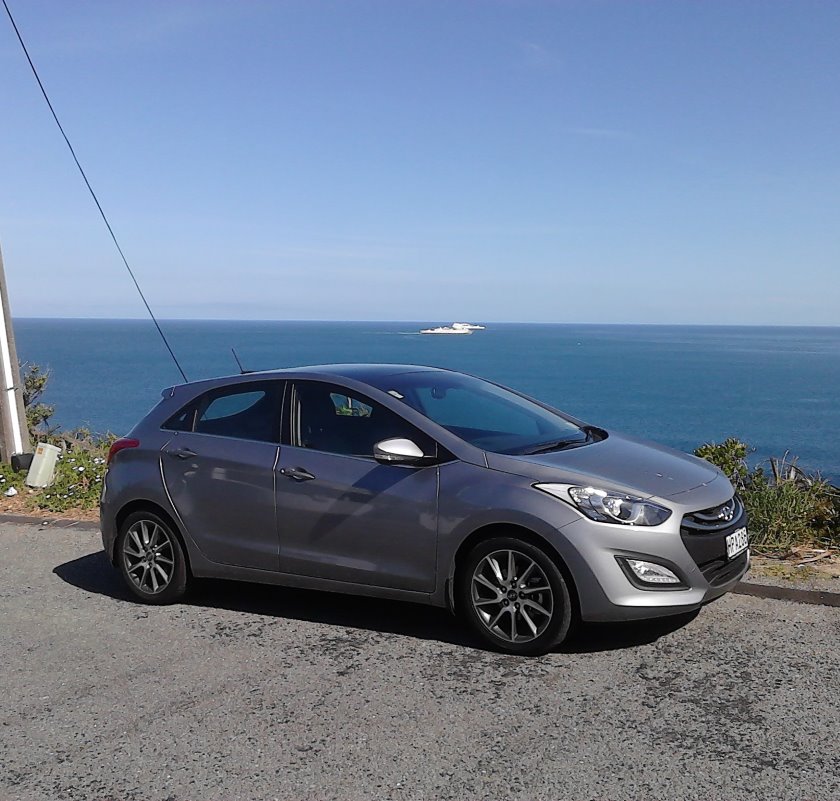
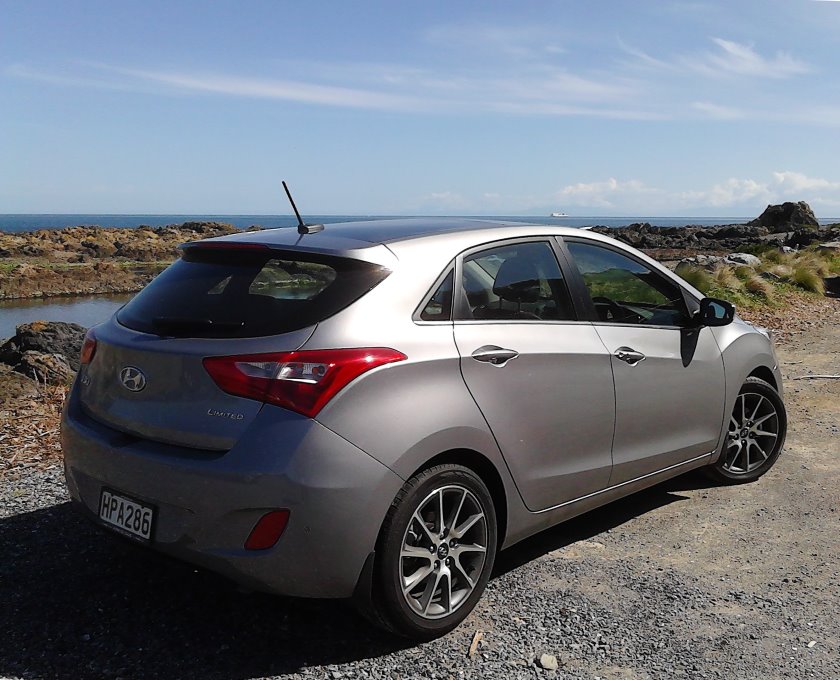
Pride The Hyundai i30 Limited, the flagship of its hatchback range, makes you feel special
Jack Yan is publisher of Lucire.
Jack Yan hops behind the wheel of the
Hyundai i30 Limited to see if the Korean giant delivers substance
in addition to its latest model’s style
photographed by the author
excerpted from issue 34 of Lucire
Before you step in to the i30 Élite Limited automatic, the two-litre flagship among the Hyundai hatchbacks in New Zealand, you realize it is very considerate. The mirrors fold out as you approach the car, and the vehicle unlocks without you touching your key: you depress a small switch on the door handle and pull it open. While proximity detectors on car keys are not new, Hyundai’s insistence that you press a button—similar to that on a calculator—takes away any of the confusion that you might find on even some very expensive cars on whether you wish to get in or not. We’ve been caught out with these on other vehicles, when the car isn’t sure if you want to enter, and the mirrors fold back in just as you tug on the door handle.
It’s this very tiny detail that confirms that Hyundai’s designers have thought about things, and that the interior to the i30 is going to be something special.
Inside, it feels exceptionally roomy, wider than the 1,780 mm width suggests. The centre console is flanked by two vertical air vents housed in aluminium-finished columns, with a seven-inch, 800-pixel wide touch screen with one of the most detailed sat-navs we have seen. The rear-view reversing camera, of course, displays here. Going beyond the premium brands, the sat-nav even warns you where the speed cameras are, along with a very logical displays describing motorway exits or splits in routes. Verdana Bold jars a bit with Hyundai’s tidy adherence to ITC Avant Garde as its interior typeface, but it is clear. Short of having a unique typeface family commissioned, as Audi, BMW and Mercedes-Benz do, from a graphic designer’s point of view, Hyundai has executed things professionally.
The console is easy to operate with the usual radio, media, map and navigation buttons, while the climate control and heated seat switches are laid out in clear fashion, acknowledging that modern, tech-savvy users who have few issues with smartphones will find everything familiar. Twelve-volt outlets, an auxiliary jack and a USB port are placed below, while the Bluetooth feature asks you simply to match the codes rather than having to type it in on your cellphone.
The i30 is a technophile’s dream with its connectivity that surpasses features on some far more expensive marques, and the only real omission was voice activation.
It’s easy to get comfortable with the seating position, while the odometer and speedometer are recessed within two chrome-surround pods, giving the interior a sporty look. The dials glow a pleasant blue, adding to the tech image, with the display in between giving you temperature, fuel, gear and, high-res graphics that show everything from a picture of the car when you get in (it plays a tune, which you can switch off), to a fuel economy gauge.
continued below
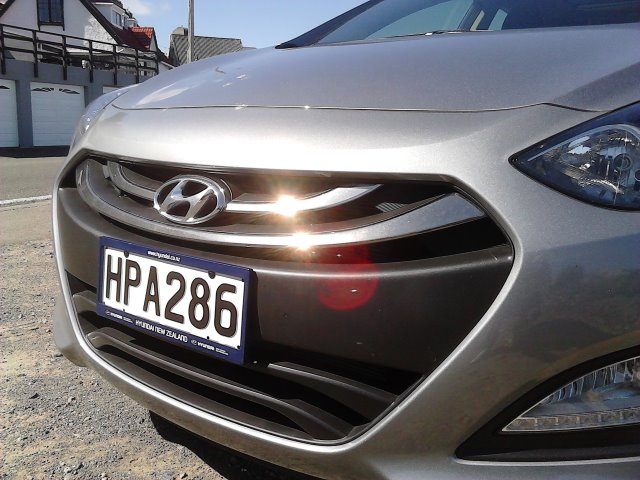
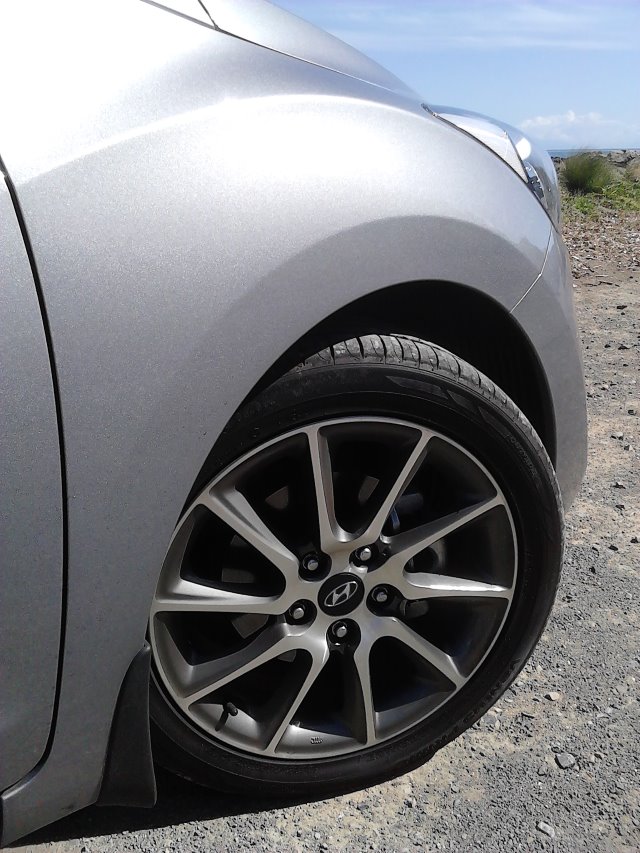
The Limited has a sunroof as standard, which is neatly integrated into the roof design, completing an interior which is, in our view, one of the most pleasant places to be. Hyundai has the likes of Ford, Toyota and Volkswagen pipped on the ambiance, and the only annoyance—which will not apply to the majority of Australasian drivers—is the swapping of the indicator and wiper stalks from the Korean and European norm. Ever since the Mk IV Cortina, or Taunus II, New Zealanders have not minded following Europe and the UK with the indicators on the left, and Hyundai keeps it this way for the UK and Éire. But they make a concession for antipodeans, which certainly shows that the company wishes to get as wide an appeal as possible by customizing features for each market.
Hyundai reminds us that the New Zealand operation is New Zealand-owned, run by Kiwis: there is no sense of the chaebol pulling strings, and as we dealt with its Wellington team in this test, there was every indication that New Zealanders have a lot of say in how the cars are specified. That specification, incidentally, includes a comprehensive toolkit and a reflective jacket to wear in emergencies.
Outside, the i30 is one of the best shapes we have seen. The earlier FD series was a first foray by the Rüsselsheim staff into understanding European tastes, but this second effort is far more convincing. It is a Hyundai but, unlike the Toyota Auris or the Nissan Tiida, it looks European. The hexagonal grille is purposeful and the chrome tastefully applied, signalling that the Limited is above regular i30s; the 17-inch alloy wheels, with their dark, brushed grey, do the same. The finish is immaculate. The haunches over the wheels, the wheel-at-each-corner stance, the relationship of where the rear door finishes relative to the rear wheel—all these are features out of the Euro design rule-book.
Set the steering wheel to sport, which weighs it down sufficiently for far better responses, and the i30 does what you ask of it in the handling stakes. It lacks a bit of sharpness compared to the more expensive BMW 116i that we tested earlier this year, but for urban usage, it’s perfectly weighted. Ride is excellent, as is the i30's refinement, with no complaints about noise or harshness. The larger alloys do not seem to have affected ride quality at all. The two-litre petrol engine, delivering 175 PS (129 kW), is efficient, but the absence of stop–start was noted. Despite this, we netted 40 mpg (Imperial), or 7 l/100 km on our test, a more than respectable figure for a six-speed auto. The fuel tank is 50 litres, a little shy of the Focus’s 55, which did mean regular refuelling on long trips, but it would not present any issue in everyday driving.
Hyundai has done well to position itself away from the budget segment in New Zealand and other countries, because there is nothing remotely cheap about the image the i30 leaves. It elicits pride in ownership: the car looks more expensive than its retail price, from NZ$43,990. The Hyundai badge does nothing that negatively affects this feeling of solid engineering. That’s the miraculous part of the car: while some mass-market brands take the sheen off a well screwed-together item, everything here is so convincing that the notion of badge snobbery seems passé. You can’t explain why you are drawn to the i30 and when you drive it, you feel a certain satisfaction.
In short, Hyundai has cracked what many other Asian brands haven’t: the i30 has character. The coldness of the old Sonata III that I tested all those years ago has gone, in favour of a complete family car that must be one of the strongest players in the C-segment. •
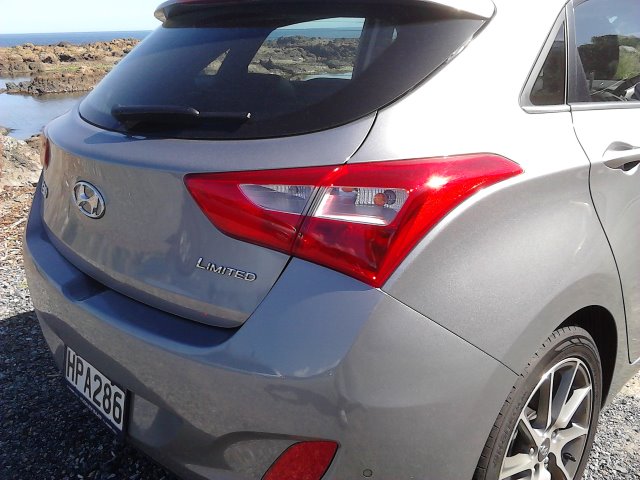
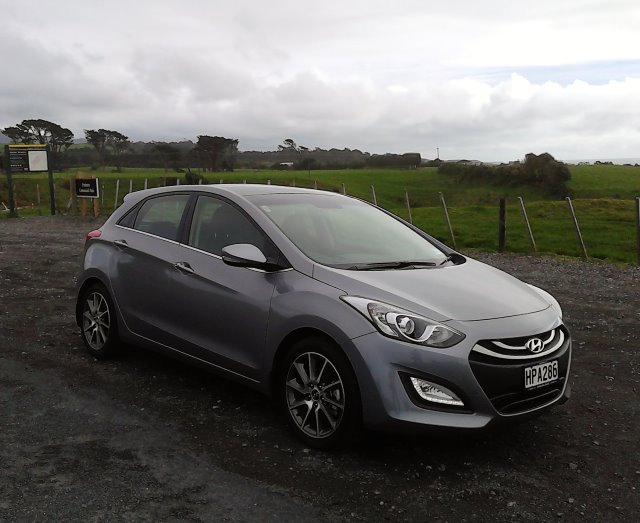
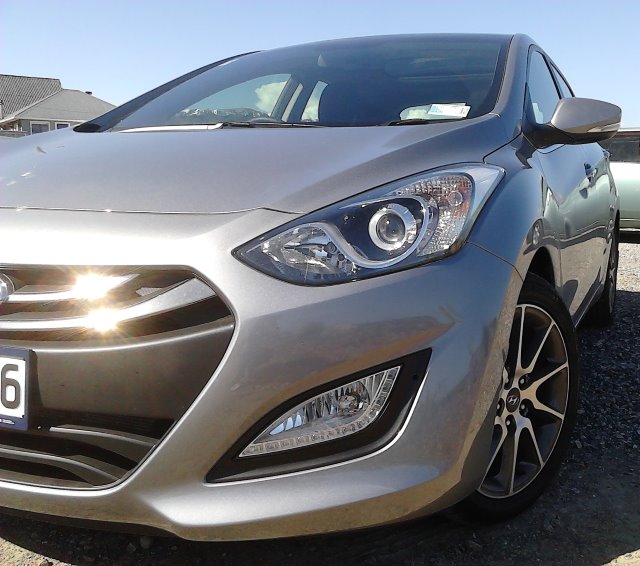
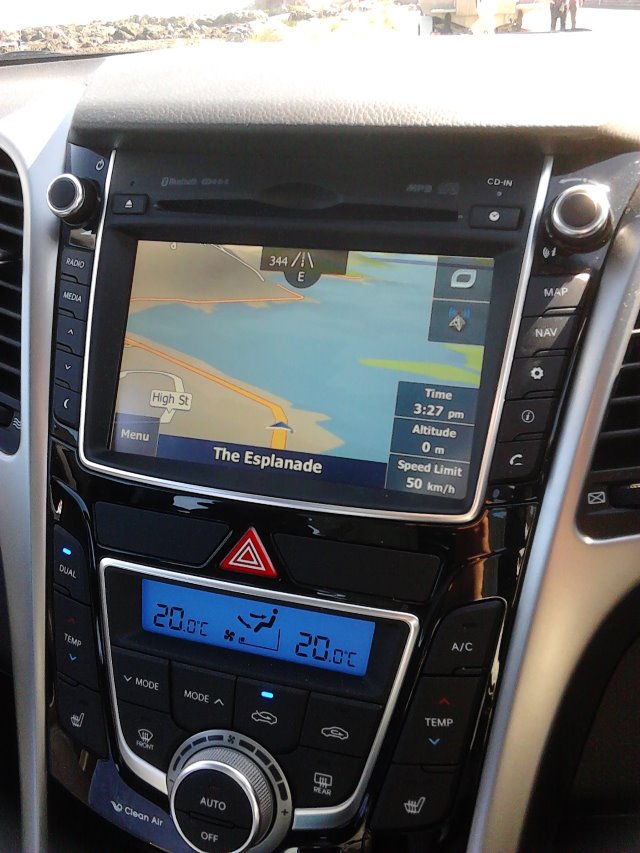
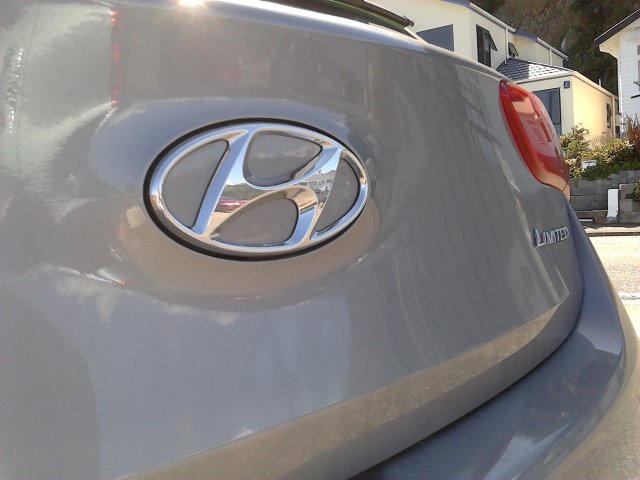
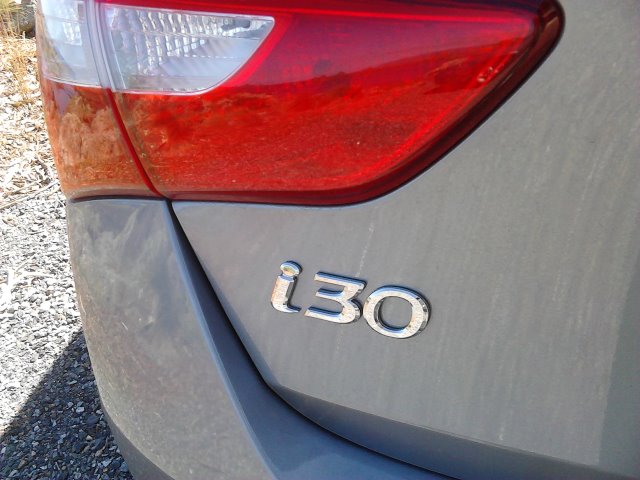
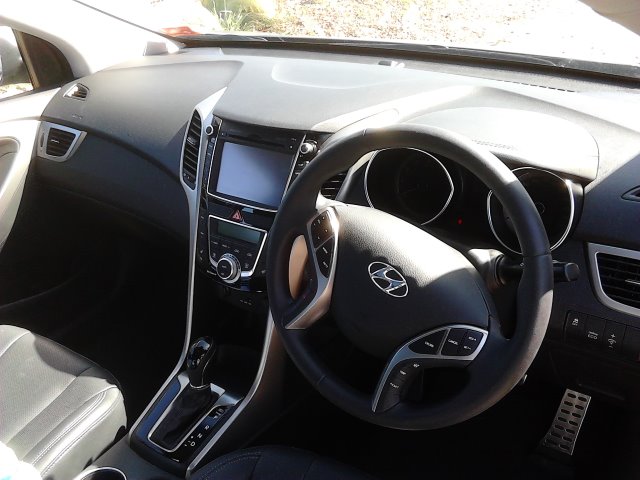
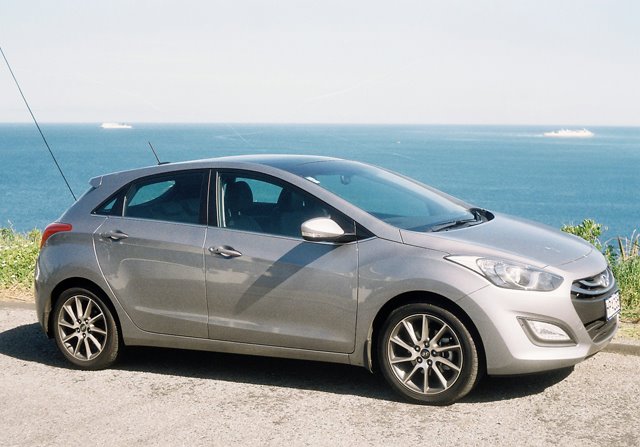
Above A stylish exterior, an interior for the technophile
Related articles hand-picked by our editors
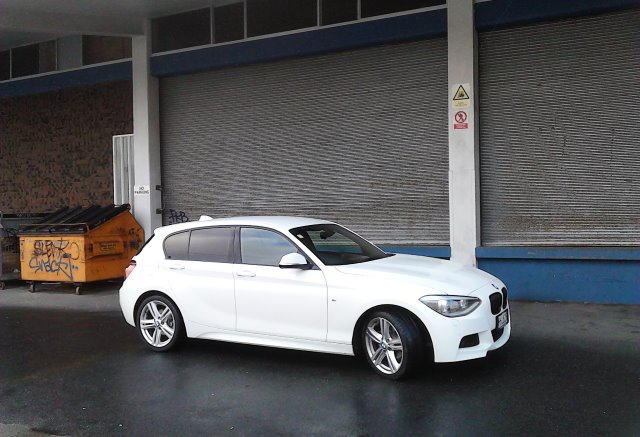
One for the money
Laden with extras, the BMW 116i Innovation Edition presents a particularly good deal at the German range’s entry level, writes Jack Yan
photographed by the author
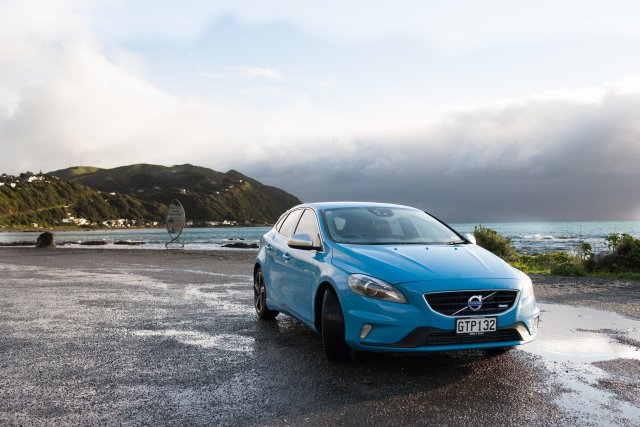
All senses engaged
Jack Yan tests the Volvo V40 T5 R Design, the Chinese-owned Swedish car maker’s latest effort, and finds it ably fulfils its sporting and design briefs
photographed by Matthew Beveridge
from issue 31 of Lucire
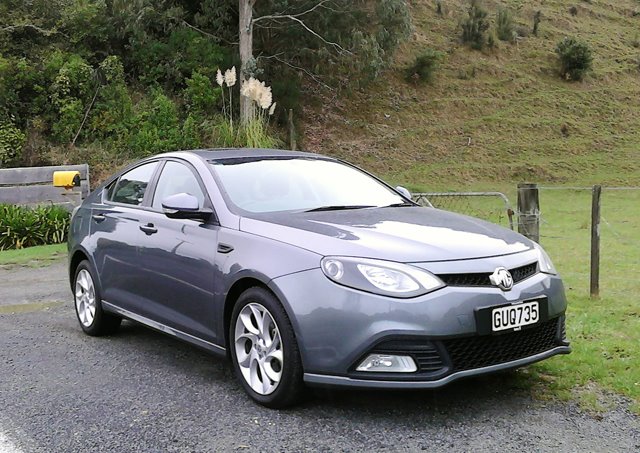
Shanghai knights
Jack Yan has some concerns with the MG 6, the first Chinese-made car tested by this magazine, but has high praise for the follow-up, the small MG 3—which shows just how rapidly China is becoming a car-making force
photographed by the author
Advertisement
Copyright ©1997–2022 by JY&A Media, part of Jack Yan & Associates. All rights reserved. JY&A terms and conditions and privacy policy apply to viewing this site. All prices in US dollars except where indicated. Contact us here.